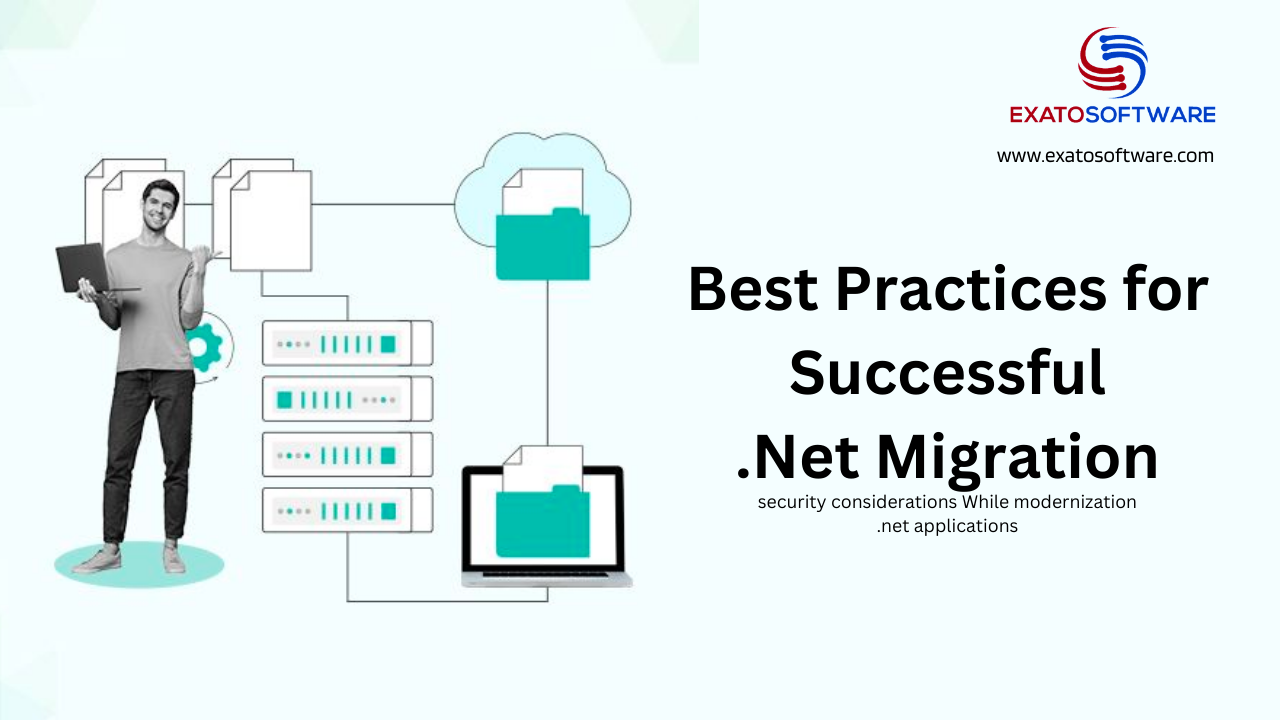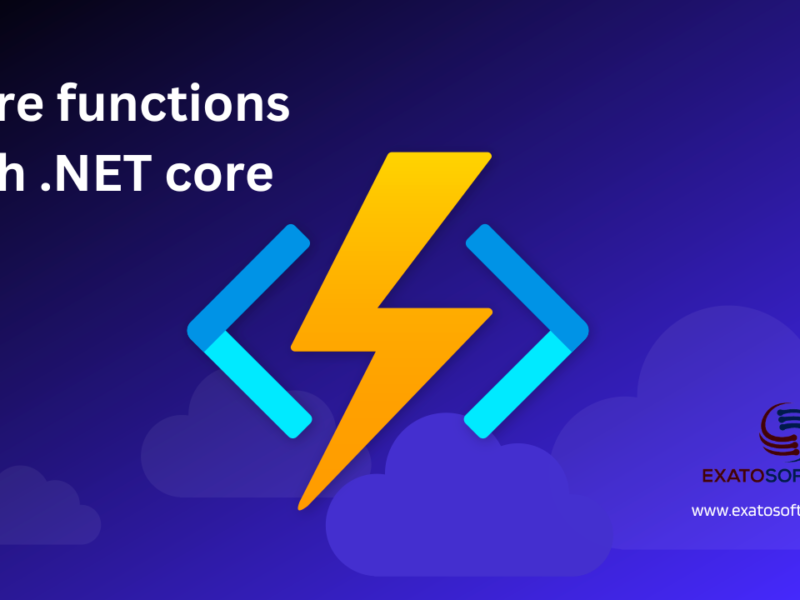Migrating a legacy application to the latest version of .NET involves several steps and careful planning to ensure a smooth transition. Generally, organizations avoid as much as they can due to the risks involved in the process. There are no two thoughts that migration of a legacy application irrespective of its current technology is a risky affair. Minor errors or bugs can bring the entire business to a standstill. The legacy applications that are used for years by organizations possess features and options that are critical for smooth operations. Missing out these features or any change in these can frustrate the stakeholders.
But, whatever it takes, most of the time, or at some point in time, migration becomes essential. Whenever that day arrives, organizations shall go for it without delays and with complete trust. Here are some best practices to help you successfully migrate your legacy application:
Assessment and Planning
This is the most important phase of the migration process which generally gets overlooked in the hurry and urgency. Not giving due importance to this phase can prove very costly in the run and may even fail the entire process. We will dig deep into this process to ensure that you understand it completely.
1. Understand the Current State.
Identify the version of .NET Framework currently used by the application. Conduct a thorough analysis of your existing application. Understand its architecture, components, modules, and dependencies.
2. List Dependencies and Third-Party Components.:
Identify and document all third-party libraries, frameworks, and components used in the application. Check the compatibility of these dependencies with the target .NET version.
3. Evaluate Application Architecture.
Assess the overall architecture of your application. Identify patterns, design principles, and potential areas for improvement. Consider whether a microservices or containerized architecture would be beneficial.
4. Review Code Quality.
Evaluate the quality of the existing codebase. Identify areas of technical debt, code smells, and potential refactoring opportunities. Consider using static code analysis tools to automate the identification of code issues.
5. Assess Compatibility and Obsolete Features.
Identify features, APIs, or libraries in your existing application that are deprecated or obsolete in the target .NET version. Make a plan to address these issues during the migration process.
6. Conduct a Feasibility Study.
Assess the feasibility of migrating specific modules or components independently. Identify potential challenges and risks associated with the migration.
7. Define Migration Goals and Objectives.
Clearly define the goals and objectives of the migration. This could include improving performance, enhancing security, adopting new features, or enabling cloud compatibility.
8. Determine Target .NET Version.
Based on the assessment, decide on the target version of .NET (.NET Core, .NET 5, .NET 6, or a future version). Consider the long-term support and compatibility of the chosen version.
9. Create a Migration Roadmap.
Develop a detailed migration roadmap that outlines the sequence of tasks and milestones. Break down the migration into manageable phases to facilitate incremental progress.
10. Estimate Resources and Budget.
Estimate the resources, time, and budget required for the migration. Consider the need for additional training, tools, and external expertise.
11. Engage Stakeholders.
Communicate with key stakeholders, including developers, QA teams, operations, and business leaders. Ensure alignment on the goals, expectations, and timelines for the migration.
12. Risk Analysis and Mitigation.
Identify potential risks associated with the migration and develop mitigation strategies. Consider having a contingency plan for unexpected issues.
13. Set Up Monitoring and Metrics.
Establish monitoring and metrics to measure the success of the migration. Define key performance indicators (KPIs) to track the application’s behavior post-migration.
14. Document Everything.
Document the entire assessment, planning, and decision-making process. Create documentation that can serve as a reference for the development and operations teams throughout the migration.
Upgrade to the Latest .NET Core/.NET 5/.NET 6
Choose the appropriate version of .NET (Core, 5, or 6, depending on the latest at the time of migration) for your application. Upgrade your application to the selected version step by step, addressing any compatibility issues at each stage.
Use the .NET Upgrade Assistant
The .NET Upgrade Assistant is a tool provided by Microsoft to assist in upgrading .NET Framework applications to .NET 5 or later. It can analyze your code, suggest changes, and automate parts of the migration.
Update Dependencies and Third-Party Libraries
Ensure that all third-party libraries and dependencies are compatible with the target version of .NET. If necessary, update or replace libraries with versions that support the chosen .NET version.
Refactor Code
Refactor code to use the latest language features and improvements in the .NET runtime. Address any deprecated APIs or features by updating your code accordingly.
Test and Test again
Migrating a legacy application to .NET Core 5 or 6 is a significant undertaking, and a robust testing strategy is crucial to ensure a successful transition.
Unit Testing.
Verify that existing unit tests are compatible with the target .NET version. Update and extend unit tests to cover new features and changes introduced during migration. Use testing frameworks like MSTest, NUnit, or xUnit.
Integration Testing.
Ensure that integration tests, which validate interactions between different components or modules, are updated and functional. Test the integration of the application with external services and dependencies.
Functional Testing.
Perform functional testing to validate that the application behaves as expected in the new environment. Test critical workflows and business processes to ensure they function correctly.
Regression Testing.
Conduct regression testing to ensure that existing features still work after the migration. Create a comprehensive regression test suite to cover the entire application.
Performance Testing.
Assess the performance of the application on the new .NET Core runtime. Conduct load testing to ensure the application can handle the expected load and concurrency. Identify and address any performance bottlenecks introduced during migration.
Security Testing.
Perform security testing to identify and address any vulnerabilities in the new environment. Review and update security configurations to align with .NET Core best practices.
Compatibility Testing.
Test the compatibility of the application with different operating systems and platforms supported by .NET Core. Verify compatibility with various browsers if the application has a web-based user interface.
Deployment Testing.
Validate the deployment process for the application in the new environment. Test different deployment scenarios, including clean installations and upgrades.
User Acceptance Testing (UAT).
Involve end-users or stakeholders in UAT to validate that the migrated application meets their expectations and requirements. Gather feedback and address any issues raised during UAT.
Automated Testing.
Increase the coverage of automated tests to speed up the testing process and ensure continuous validation. Utilize tools for automated testing, such as Selenium for web applications or Postman for APIs.
Exploratory Testing.
Perform exploratory testing to uncover issues that might not be covered by scripted tests. Encourage testers to explore the application and identify any unexpected behaviors.
Documentation Validation.
Ensure that documentation, including user manuals and technical documentation, is updated to reflect the changes introduced during migration.
Rollback Plan Testing.
Develop and test a rollback plan in case issues arise after the migration. Ensure that you can revert to the previous version of the application if needed.
Continuous Feedback and Improvement.
Establish a feedback loop to collect input from testing teams, developers, and end-users. Use feedback to iteratively improve the application and address any issues discovered during testing.
By incorporating these testing strategies and types, you can increase the likelihood of a successful migration to .NET Core 5 or 6 while minimizing the risk of introducing defects or issues into the production environment.
Continuous Integration and Deployment (CI/CD)
Establishing a robust Continuous Integration/Continuous Deployment (CI/CD) pipeline is essential for a successful migration of a legacy application to .NET Core 5 or 6. Include following components to ensure migration goes smoothly and without interruptions.
Source Code Repository.
Utilize a version control system (e.g., Git) to manage and version your source code. Create a branch specifically for the migration, allowing for isolation of changes.
Build Automation.
Automate the build process using build scripts or build automation tools (e.g., MSBuild or Cake). Set up a build server (e.g., Azure DevOps, Jenkins, GitHub Actions) to trigger builds automatically on code changes. Ensure that the build process includes compilation, unit testing, and other necessary tasks.
Automated Testing.
Integrate automated testing into the CI/CD pipeline, including unit tests, integration tests, and any other relevant tests. Use testing frameworks compatible with .NET Core (e.g., MSTest, NUnit, xUnit). Fail the build if any tests fail, preventing the deployment of code with unresolved issues.
Code Quality Checks.
Implement static code analysis tools (e.g., SonarQube) to assess code quality and identify potential issues. Enforce coding standards and best practices through code analyzers.
Artifact Management.
Publish build artifacts (e.g., binaries, packages) to an artifact repository (e.g., NuGet, Artifactory) for versioned and centralized storage.
Containerization (Optional).
If applicable, containerize the application using Docker. Include Docker images as part of the CI/CD pipeline to ensure consistency in deployment environments.
Configuration Management.
Manage configuration settings for different environments (development, testing, production) using configuration files or environment variables. Automate configuration changes as part of the deployment process.
Deployment Automation.
Automate deployment tasks to streamline the migration process. Use deployment tools like Octopus Deploy, AWS CodeDeploy, or Kubernetes for containerized applications.
Environment Provisioning.
Automate the provisioning of testing and staging environments to mirror production as closely as possible. Use infrastructure-as-code (IaC) tools (e.g., Terraform, ARM templates) for environment provisioning.
Continuous Integration with Pull Requests.
Integrate pull requests with the CI/CD pipeline to ensure that changes are validated before being merged into the main branch. Enforce code reviews and quality gates before allowing code to be merged.
Rollback Mechanism.
Implement a rollback mechanism in case issues are detected post-deployment. Ensure that the CI/CD pipeline can easily revert to a previous version of the application.
Monitoring and Logging.
Integrate monitoring tools (e.g., Application Insights, Prometheus) to track application performance and detect issues. Include logging mechanisms to capture and analyze application behavior.
Security Scanning.
Integrate security scanning tools (e.g., SonarQube, OWASP Dependency-Check) to identify and address security vulnerabilities.
Notification System.
Implement a notification system to alert relevant stakeholders in case of build failures, deployment issues, or other critical events.
Documentation Generation.
Automatically generate documentation (e.g., Swagger for APIs) as part of the build process. Ensure that documentation is versioned and aligned with the deployed code.
Post-Deployment Tests.
Implement automated post-deployment tests to validate the application’s functionality in the target environment.
Feedback Loop.
Establish a feedback loop to collect insights from the CI/CD pipeline, such as test results, code quality metrics, and deployment success/failure.
By incorporating these features into your CI/CD pipeline, you can automate and streamline the migration process, reduce the risk of errors, and ensure a consistent and reliable deployment of your legacy application to .NET Core 5 or 6.
Training and Documentation
Train your development and operations teams on the changes introduced by the migration. Update documentation to reflect the new architecture, configurations, and processes.
By following these best practices, you can increase the likelihood of a successful migration and minimize disruptions to your application’s functionality.



